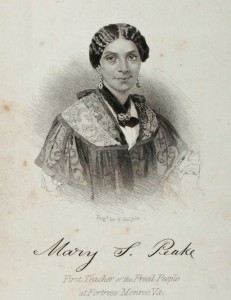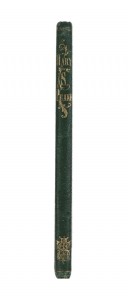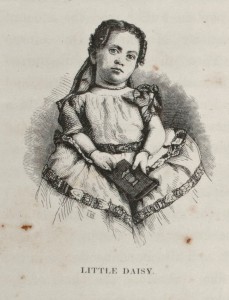 What we have for you today is the story of a remarkable African American woman and her community. The story was told by Rev. Lewis C. Lockwood, self-described as the “First Missionary to the Freedmen at Fortress Monroe, 1862,” in a book titled: Mary S. Peake, the Colored Teacher at Fortress Monroe. (The full text is available online through Project Gutenberg, or you can check out the AAS online catalog record describing our copy of the original.)
What we have for you today is the story of a remarkable African American woman and her community. The story was told by Rev. Lewis C. Lockwood, self-described as the “First Missionary to the Freedmen at Fortress Monroe, 1862,” in a book titled: Mary S. Peake, the Colored Teacher at Fortress Monroe. (The full text is available online through Project Gutenberg, or you can check out the AAS online catalog record describing our copy of the original.)
The small green book is only 16 cm high and 1 cm thick, but it is packed with vivid accounts of the free black community that grew up around Fortress Monroe after the nearby town of Hampton, VA was burned in the summer of 1861. Though 150 years have passed, Mary’s story tells us much about the everyday heroism and hope for the future that was present in nineteenth-century free black communities, traits that didn’t begin or  end with the Civil War.
end with the Civil War.
The bare bones of the life story of “Mary S. Peake, the Colored Teacher at Fortress Monroe” are easily told.
In 1823, Mary S. Kelsey was born in Virginia to a free colored woman and was educated in Alexandria until:
a law of Congress enacted that the law of Virginia in relation to free colored people should prevail in the District of Columbia. This was several years before Alexandria was retroceded to Virginia. This law closed all colored schools in the city. Mary was compelled to leave the school in consequence of being informed of as having come from Virginia.
In 1847, Mary’s mother was married to Thompson Walker, and they bought a house in Hampton, VA.
In 1851, Mary was married to Thomas Peake, formerly a slave, but afterward a free man, and soon had a daughter Daisy. Of this time in her life, our narrator, Rev. Lockwood, writes:
Though sustaining herself by her needle, Mary found time for many labors of love. Among other things, she originated a benevolent society, called the “Daughters of Zion,” designed for ministration to the poor and the sick. It is still in existence.
Her house, like that of Mary and Martha of old, was a place of spiritual resort. There the pastor, deacons, and other leading members of the church found congenial society. She early began the exercise of her gifts as a teacher. At that time, fifteen years earlier, she had among her pupils Thompson Walker, her stepfather, William Thornton, and William Davis, all now able and eloquent exhorters. She was afterward of great service to others, who are now efficient exhorters and members of the church.
Up to the time of the burning of Hampton, she was engaged in instructing children and adults, through her shrewdness and the divine protection eluding the vigilance of conservators of the slave law, or, if temporarily interfered with, again commencing and prosecuting her labors of love with cautious fearlessness, and this in the midst of the infirmities attending a feeble constitution. (p. 14-15)
While her work may have been “temporarily interfered with” earlier, 1861 was the year everything changed for Mary Peake, for her family, and for the fellow African Americans she taught. Their lives would never be the same. Neither would their country.
Tune in next week for Part 2 of our saga exploring the effect of the Civil War on one woman and her community.


Watching the story about Mary Peake on PBS. Great story on yet another strong Black women.
I was really intrested in the story, but can’t seem to find part two, was wondering if it was ever published?
Glad to hear of your interest, Daniela. Unfortunately part two was never published, but knowing there is interest is just the incentive I need to go back and find my notes to finish it. Stay tuned!